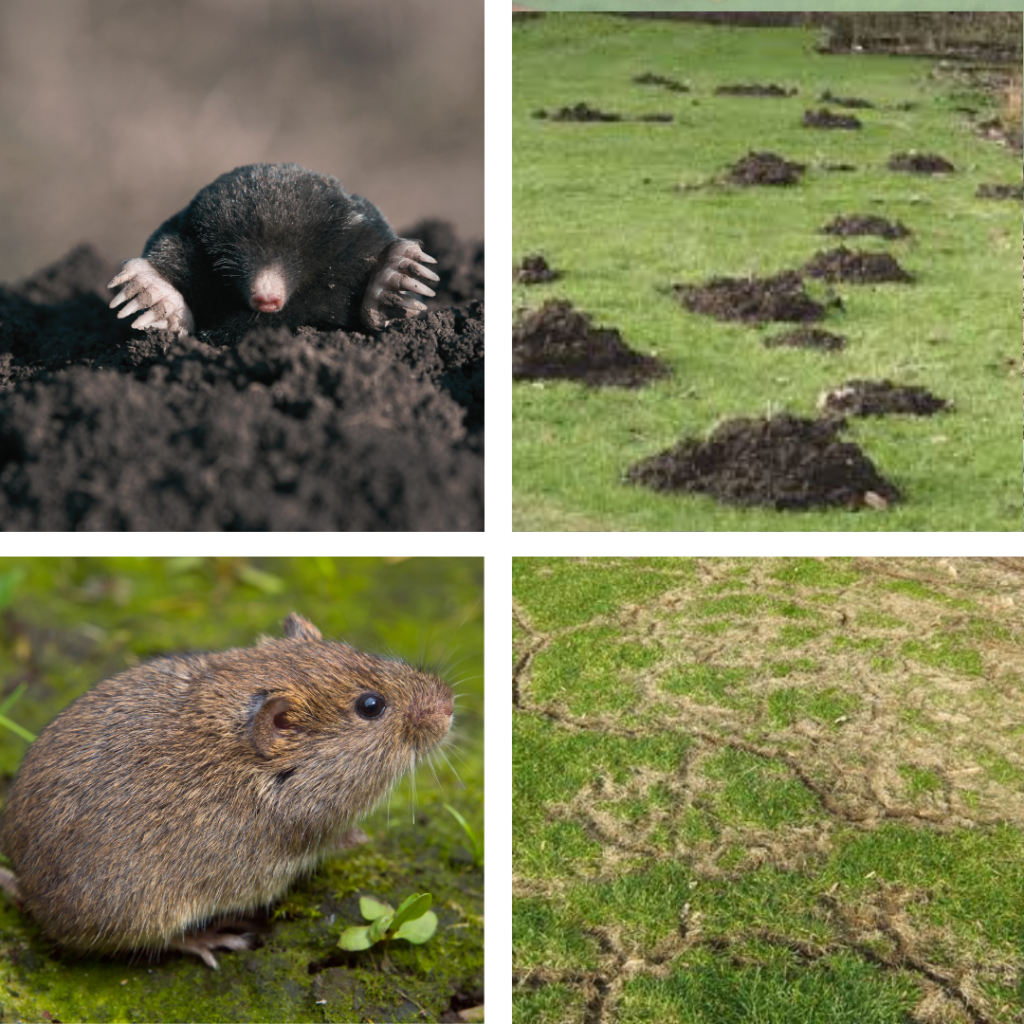Spring, and the hills are alive … literally

Spring has either sprung (meteorologically, March 1) or will soon be springing (astronomically, March 20). But some things are popping up all over that I am getting several calls on already.
Moles, voles and a few other gardening issues have made some lawn areas look more like a road map or mine field than a green carpet.
Moles and voles are constantly confused by callers, but are as different as a goldfish is different from a golden retriever. Yes, both disrupt turfgrass, but that is their only commonality. If you are ever in an in-person class I teach, I use a mnemonic devise (a fancy way of remembering something using something easy to remember).
I have people make the ol’ 1960’s peace sign with their hand. That makes a “V.” The distance between the tips of your fingers is about how long a vole is. They are small mammals. In our area, we have meadow or pine voles. They are mouse-sized individuals that have a little stub tail.
The “V” also can help you remember that voles are vegetarian. Voles feed on roots — especially Hosta, seeds, grasses, leaves, other roots and the bark of thin, wooded trees.
What they aren’t in size, they make up for in activity. Homeowners over the last few weeks have been reaching out to me after they see what appears to be a road map carved out in their lawn. These are interconnected paths where voles travel and go out to eat in the winter months.
Another reference to the “V” reminder. V is next to the letter W — voles are mostly active in-home landscapes in winter, particularly under snow and overly deep mulch.
The great news about vole damage to turf: You literally don’t have to do anything for it to disappear. The grasses we grow as turf in our Northern Illinois lawns are rhizomatous. That is a fancy word for spreading. So, within a few weeks those road maps will just magically disappear on their own. But what about the actual voles themselves?
Once winter winds down, voles tend to move away from home landscapes where we soon will become active with all of our warm weather outdoor activities. They move off into tall grasses, or woodlands to set up their summer home, where they will be expanding their family.
Also, our predaceous animals — especially our birds of prey — will be picking them off for a nice fast-food snack. I wonder if I could sell the idea of a McVole to McDonald’s … probably not.
So turfgrass vole issues are moot. But there are other places voles do damage that isn’t so innocuous. How could this tiny little animal actually kill a tree? Truth. Remember when I talk about the importance of not creating mulch “volcanoes” around trees?
Volcano mulching is that all-too-regular situation you see on both homeowner and municipal properties, where mulch is piles sometimes 3 feet deep right against the bark of a tree. This is a winter paradise for the vole: one especially thin skin tree, they are protected from the elements under that mulch and can spend their winter, dining on the bark of trees.
So much so that the tree can be stripped of its protective “skin,” and the circulatory system is then exposed. Just like if your skin is damaged, your circulatory system springs a leak, and you bleed. A tree with an exposed circulatory system, even if it is just a few inches, can be fatal to a tree.
So, mulch less, and you will have less voles. Also, if you have young fruit trees, consider putting a wire hardware cloth barrier around the bottom foot of the tree.
Voles are also the bane of many a Hosta gardener. When people call to tell me their Hostas are dead, I ask if there is anything remaining or is the crown of the Hosta missing? If the latter is the case, voles are to blame. There are some great fertilizers that have taste repellants mixed in that can repel voles from Hosta snacking.
Moving on from the V is for vole, to M is for mole. Think about M standing for meat eating. Moles are mostly carnivorous dining on insects in the soil, earthworms, but particularly grubs. Often mole problems don’t arise until mid-August, when our turfgrass grubs are hatching out.
Your lawn can go from beautiful to looking like a mine field overnight. The solution here is to treat for the grubs, and the moles tend to go away.
There are several controls for moles — the “ultimate solution” is the mole harpoon trap. It is a sharp scissors that kill moles. Many people resort to this, but are often unsuccessful, because there can be many mole hills, but only some are active.
Some people find success using the organic product Milorganite (which, it is true, is human waste from Milwaukee that is broken down to become an organic fertilizer). All mammals despise it, and using it as a fertilizer or around plants that get chewed up, is a great organic solution.
Not every control works for everything. But using something that has less of an impact on the environment is worth a try.
And when we look at the natural world in the big picture, moles and voles are great for the environment. Moles eat some pests; voles and moles help to aerate the soil. It all depends on what your tolerance level is.
The biggest thing to remember overall is humans make plans, and Mother Nature laughs. We love our gardens and natural areas, but remember, they belonged to wildlife long before we bought in.
I like that University of Illinois Extension uses the term “Living with Wildlife” instead of the idea of eradicating all things that are outside a perfect idea.
Something to think about.
